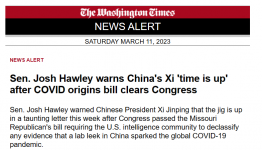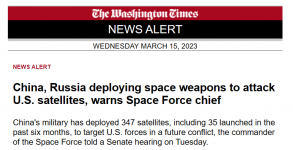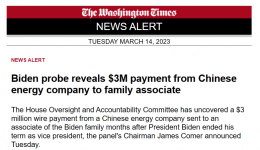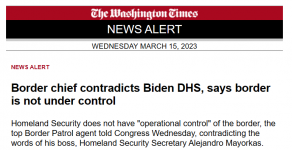Iran, China and the Panama Canal: Is the US Being Encircled?
by Lawrence A. Franklin
Gatestone Institute
March 14, 2023 at 5:00 am
- Iran and China are on the move again. Last Friday, to the apparent surprise of the Biden Administration, China asserted its influence in the Middle East by entering the vacuum created by US President Joe Biden, and brokering a deal between Iran and its threatened neighbor, Saudi Arabia, which Biden had vowed to make a "pariah," and "end the sale of material" to it. The Saudis heard.
- Iran, meanwhile, has not been shy about its mission to "export the revolution" to the Western hemisphere. Most recently, in February, two Iranian warships docked in Brazil, under its recently elected socialist President Luis Inácio Lula da Silva. From there, the ships will reportedly proceed to the Panama Canal, already controlled at both ends by Iran's newish ally -- the Chinese Communist Party (CCP).
- The Chinese Communist Party officially declared a "people's war" on the US on May 14, 2019, in flagship news[paper, the People's Daily, as well as before that, on January 29, 2017, even if the US was not listening.
- Iran has high praise for da Silva. He has refused to join the US-led sanctions regime against Tehran, and has stated repeatedly that Iran has the right to develop peaceful nuclear programs and that the Islamic Republic should be taken at its word until proven otherwise by the International Atomic Energy Agency (IAEA). According to the IAEA, however, Iran seems to have been cheating the "whole time."
- Now according to reports, Iran is just days away from being able to create its nuclear bombs, just as the 2015 JCPOA "nuclear deal" allowed it to do, anyway. The Biden Administration, like the Obama Administration, is most likely just trying to avoid having Iran going full nuclear "on my watch," as Obama let slip in 2015.
- In a visible challenge to US dominance in the Western Hemisphere, the Iranian ships will proceed to the Panama Canal, at both ends of which sits -- China.
- "It's no secret that China has been pouring resources into South America this century, chipping away at the United States' historic dominance." — Buenos Aires Times, February 18, 2022.
- Is the US being encircled?
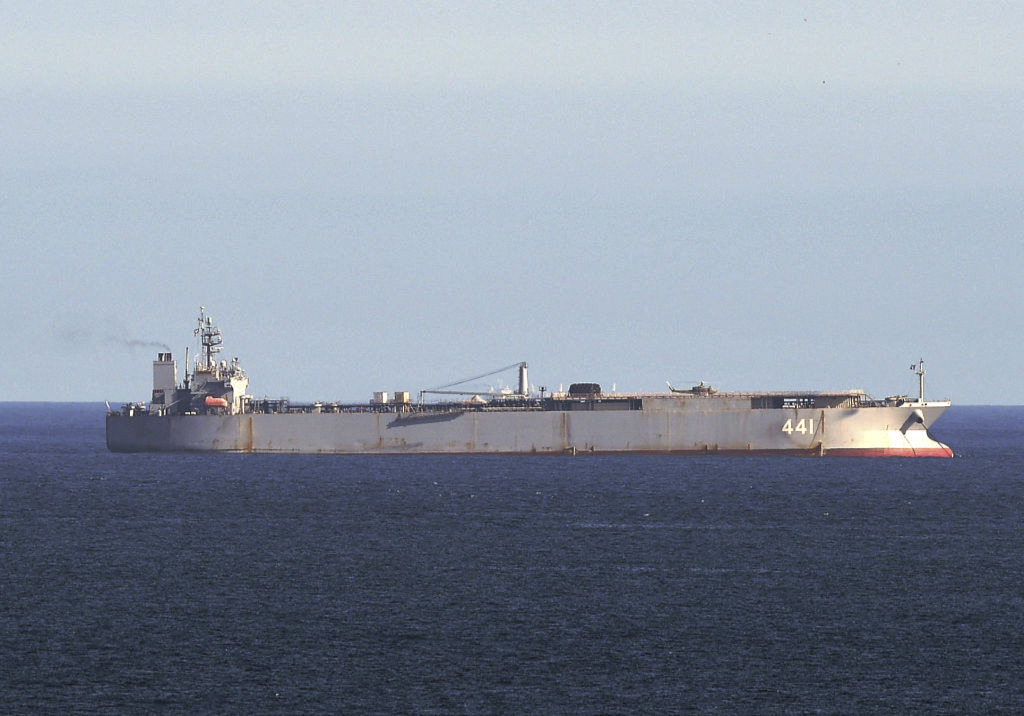
Iran has not been shy about its mission to "export the revolution" to the Western hemisphere. Most recently, in February, two Iranian warships docked in Brazil. Pictured: The Iranian warship
Iris Makran sails off the coast of Rio de Janeiro, Brazil on February 27, 2023. (Photo by Carl de Souza/AFP via Getty Images)
Iran and China are on the move again. Last Friday, to the apparent
surprise of the Biden Administration, China asserted its influence in the Middle East by entering the vacuum created by US President Joe Biden, and brokering a deal between Iran and its threatened neighbor, Saudi Arabia, which Biden had vowed to make a "
pariah," and "
end the sale of material" to it. The Saudis heard.
Iran, meanwhile, has not been shy about its mission to "
export the revolution" to the
Western hemisphere. Most recently, in February, two Iranian warships
docked in Brazil, under its recently elected socialist President Luis Inácio Lula da Silva. From there, the ships will reportedly
proceed to the Panama Canal, already controlled at both ends by Iran's newish
ally -- the Chinese Communist Party (CCP).
The CCP officially declared a "people's war" on the United States on May 14, 2019, in its flagship newspaper, the
People's Daily, as well as
before that, on January 29, 2017, even if the US was not listening.
Iran has been openly infiltrating South America for decades. In 1994, it famously blew up a Jewish community center in Buenos Aires, Argentina, killing 85 people. Recently, while the
Biden Administration has been pursuing a "nuclear deal" with Iran -- one that will enable it soon to have as many nuclear weapons as it likes -- Iran has been expanding its already sizeable foothold south of the US border. The militant Islamic theocracy already has a significant
presence -- and presumably influence -- in Venezuela, Bolivia, Ecuador and Nicaragua. It is now targeting Brazil and the Panama Canal.
Brazilian President da Silva has a
history of welcoming Iran. In 2009, during his previous presidential term, he warmly
greeted then Iranian President Mahmoud Ahmadinejad during his state visit to Brazil. Da Silva will decidedly shift from the pro-US and pro-Israel foreign policy of his predecessor, President Jair Bolsonaro, to one that favors friendly ties with Iran.
Da Silva, who served as Brazil's president from 2003 to 2010,
barely defeated Bolsonaro in a runoff election last October. A left-wing populist, da Silva drew support from Brazilians who benefited by his liberal welfare policies, particularly access to affordable
health care, during his previous terms as president.
Under the Bolsonaro administration (2019-2022), diplomatic links between Iran and Brazil were chilly. His investigation of
Hezbollah and its activities in the
tri-border zone of Brazil, Paraguay and Argentina resulted in the 2018 arrest of the terrorist group's regional financier Assad Ahmad Barakat. Bolsonaro's support for Israel, on the other hand, was shown by the first visit ever by an Israeli Prime Minister to Brazil: Benjamin Netanyahu
attended Bolsonaro's inauguration in 2019.
Iran welcomed da Silva's election and the warming of relations with Brazil it expects will ensue. Iran's Foreign Ministry spokesman, Nasser Kanaani, was quick to
congratulate da Silva on his election. The congratulatory
message from Hamas politburo member Basir Naim, was, not surprisingly, that Hamas "looks forward to President Lula mitigating all the effects of the unlimited support [from Bolsonaro] for the Israeli Occupation State."
Brazilians do not necessarily support da Silva's shift to the left on foreign policy. A
Pew poll conducted in 2015 revealed that the great majority of Brazilians had an unfavorable view of Iran. Brazil had warm relations with Iran during da Silva's earlier terms. He visited Iran in 2010, following Ahmadinejad's visit to Brazil in 2009. Brazil is also Iran's
largest trading partner in Latin America. Brazilians ship large amounts of meat (mostly beef), medicines and cars to Iran. Brazil's oil giant Petrobras has
invested heavily in Iran's oil industry.
Da Silva's turn away from the West was recently underscored by his granting
permission for two Iranian warships to dock in Rio de Janeiro immediately after his visit to the White House late last month. The US Department of State and the US Ambassador to Brazil Elizabeth Bagley were unsuccessful in their efforts to persuade da Silva to deny Iran's warships permission to dock.
Iran has high praise for da Silva. He has refused to join the US-led
sanctions regime against Tehran, and has criticized Western
suspicions of Iran's intentions concerning nuclear weapons. Da Silva has
stated repeatedly that Iran has the right to develop peaceful nuclear programs and that the Islamic Republic should be taken at its word until proven otherwise by the International Atomic Energy Agency (IAEA). According to the IAEA, however, Iran seems to have been cheating the "
whole time."
In 2004, the IAEA accused Iran of violating the agency's "Safeguards Agreement": the regime failed to notify the IAEA of
increased enrichment activities. The IAEA also noted that Iran prematurely
deployed advanced uranium enrichment centrifuges. In still another accusation leveled by the IAEA against Iran, the agency declared that Tehran processed uranium gas necessary for the production of the
uranium metal needed for the core of a nuclear weapon. These are but a few of the violations which underscore Iran's duplicity regarding its nuclear program. What is needed for peaceful nuclear use is uranium enriched to
3% to 20%. Iran has now
enriched uranium to 84%, close to the 90% needed for use in nuclear bombs, and, according to reports, is just "
days away" from being able to build its nuclear weapons, as the 2015 JCOA nuclear deal
allows it to do, anyway.
The Biden Administration, like the Obama Administration, is most likely just trying to avoid having Iran going full nuclear "
on my watch," as Obama let slip in 2015.
The Iranian vessels that docked in Brazil, were the
Iris Makran (the
largest Iranian warship) and the
Iris Dena, a frigate. They are part of Iran's 86th Flotilla and its newly established
Atlantic Ocean Command. In a visible challenge to US dominance in the Western Hemisphere, the ships will proceed to the
Panama Canal.
This visit to Latin America is the second such naval deployment to the hemisphere since Iran's Atlantic
maritime tour in 2021. There is every reason to expect Tehran to attempt to expand its diplomatic and military profile in this region.
As Brazil is the
largest, most populous, and militarily strongest nation in South America, other Latin American countries might be emboldened to also seek better ties with adversaries of the US. How did "China Beat Out the U.S. to Dominate South America"? According to
Bloomberg:
"China has bought up so much copper, pork, and soy—and constructed so many roads, trains, power grids, and bridges—that it's surpassed the U.S. as South America's largest trade partner and is now the single biggest trader with Brazil, Chile, and Peru."
"It's no secret that China has been pouring resources into South America this century, chipping away at the United States' historic dominance,"
noted the
Buenos Aires Times.
Seven South American countries – Venezuela, Ecuador, Peru, Bolivia, Chile, Argentina and Uruguay -- are already part of the China's Belt and Road Initiative; the only country with diplomatic ties to Taiwan is
Paraguay. Add to this that China is also apparently eager to increase its
economic and
military presence in the
Caribbean.
Is the US being encircled?
Dr. Lawrence A. Franklin was the Iran Desk Officer for Secretary of Defense Rumsfeld. He also served on active duty with the U.S. Army and as a Colonel in the Air Force Reserve.
Iran and China are on the move again. Last Friday, to the apparent surprise of the Biden Administration, China asserted its influence in the Middle East by entering the vacuum created by US President Joe Biden, and brokering a deal between Iran and its

www.gatestoneinstitute.org



/cloudfront-us-east-2.images.arcpublishing.com/reuters/UUNSEJ6BO5L5DNJTXTPLT5KEQI.jpg)
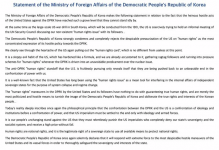
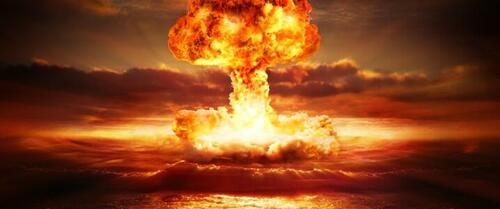


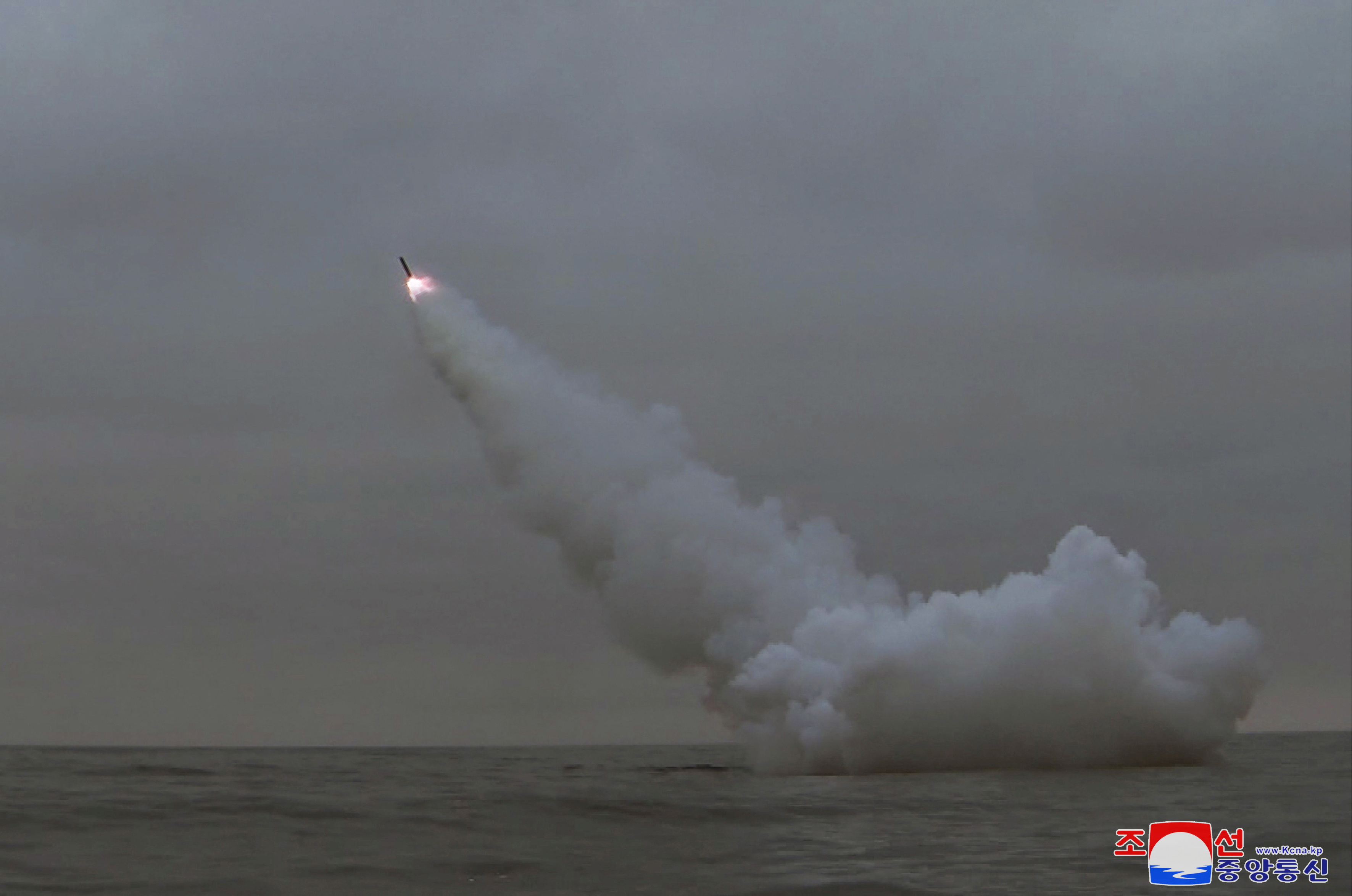
/cloudfront-us-east-2.images.arcpublishing.com/reuters/7QDGKPXVKZNI3MD7ZWORAZMN2I.jpg)
